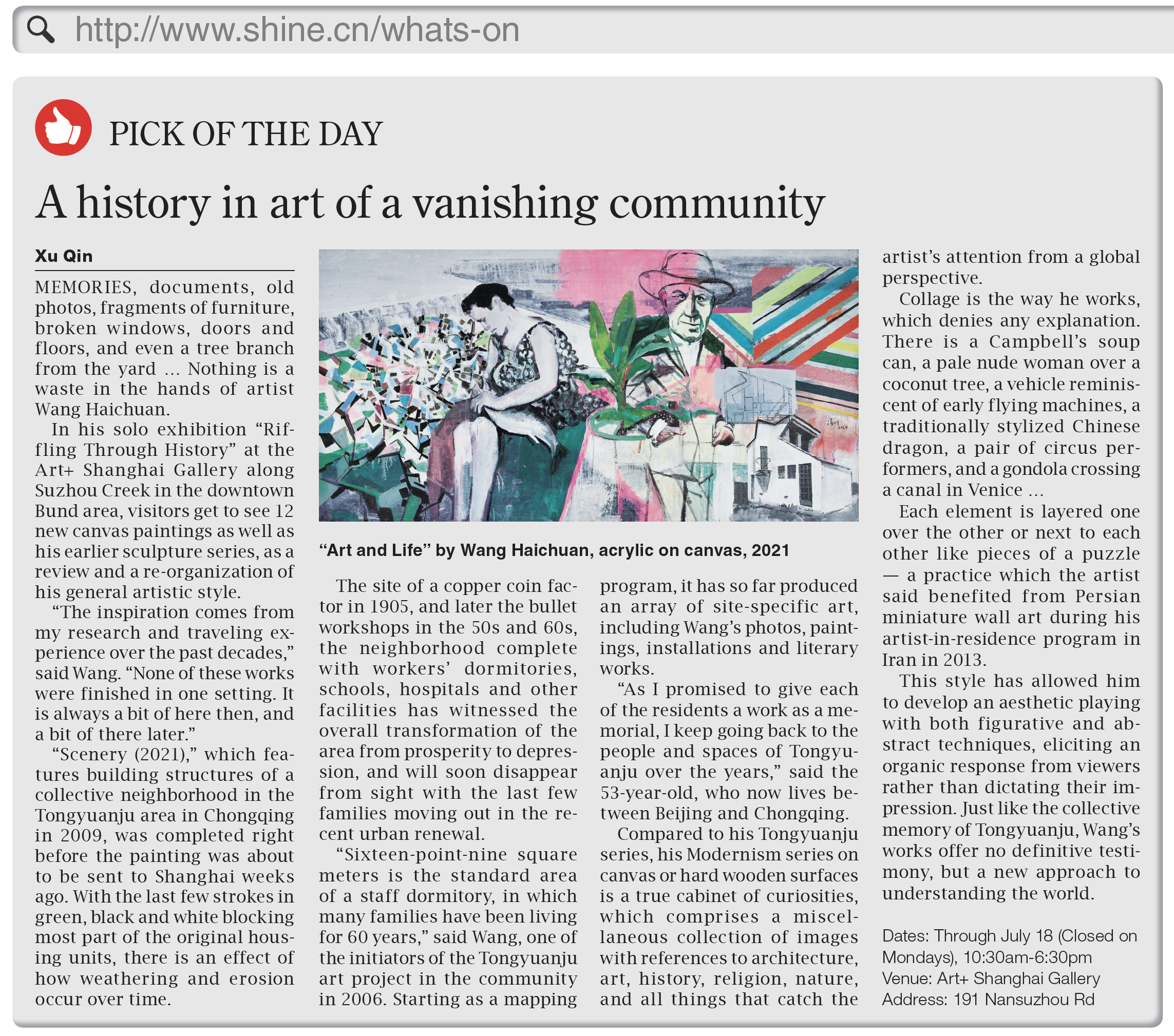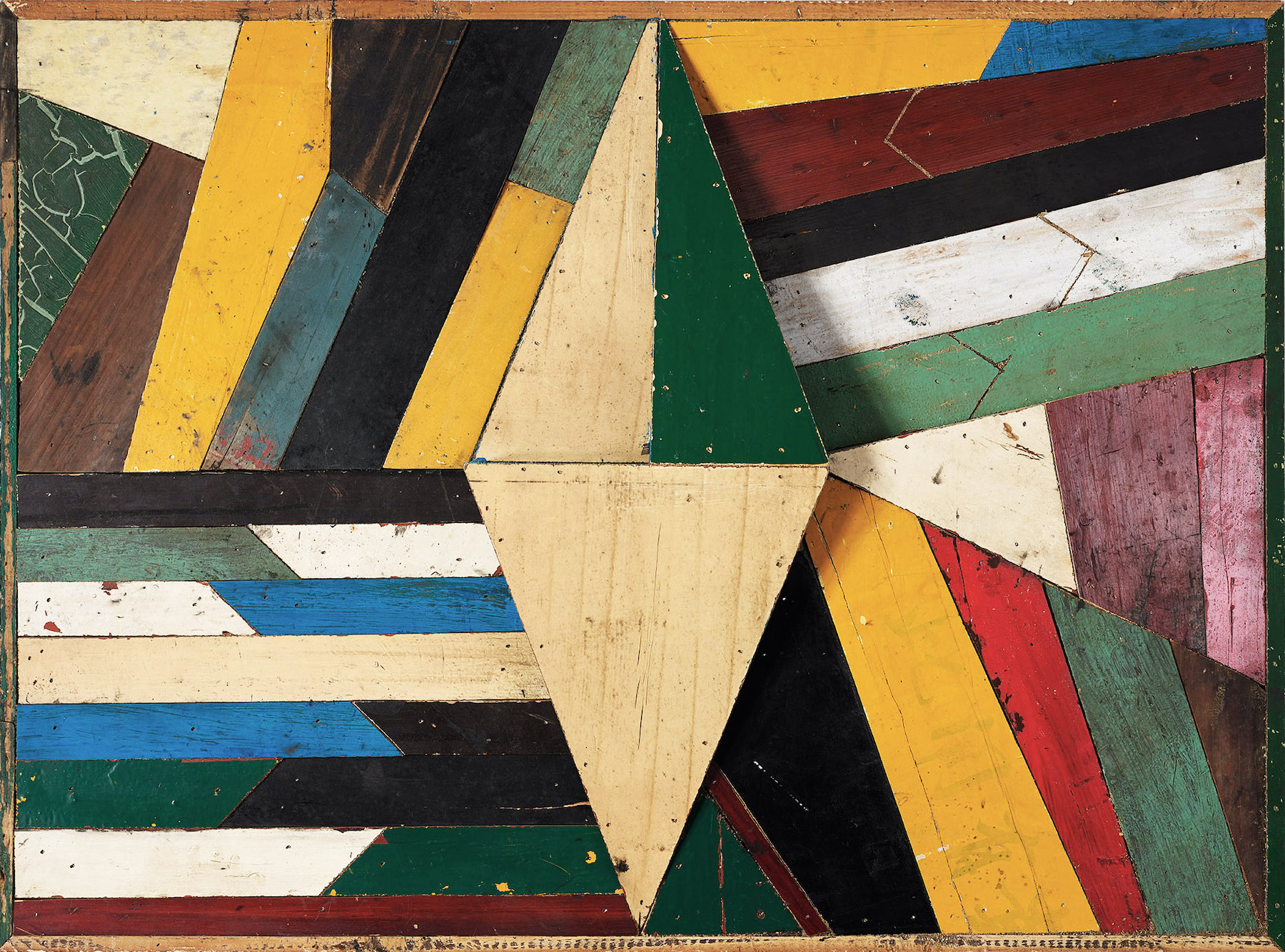A History in Art of a Vanishing Community
By Xu Qin

Friday, June 18th, 2021, Shanghai Daily
Memories, documents, old photos, fragments of furniture, broken windows, doors and floors, and even a tree branch from the yard ... Nothing is a waste in the hands of artist Wang Haichuan.
In his solo exhibition "Riffling Through History" at the Art+ Shanghai Gallery along Suzhou Creek in the downtown Bund area, visitors get to see 12 new canvas paintings as well as his earlier sculpture series, as a review and a re-organization of his general artistic style.
"The inspiration comes from my research and traveling experience over the past decades," said Wang. "None of these works were finished in one setting. It is always a bit of here then, and a bit of there later."
"Scenery (2021)," which features building structures of a collective neighborhood in the Tongyuanju area in Chongqing in 2009, was completed right before the painting was about to be sent to Shanghai weeks ago. With the last few strokes in green, black and white blocking most part of the original housing units, there is an effect of how weathering and erosion occur over time.

Scenery, acrylic on canvas, 2021
The site of a copper coin factor in 1905, and later the bullet workshops in the 50s and 60s, the neighborhood complete with workers' dormitories, schools, hospitals and other facilities has witnessed the overall transformation of the area from prosperity to depression, and will soon disappear from sight with the last few families moving out in the recent urban renewal.
"Sixteen-point-nine square meters is the standard area of a staff dormitory, in which many families have been living for 60 years," said Wang, one of the initiators of the Tongyuanju art project in the community in 2006. Starting as a mapping program, it has so far produced an array of site-specific art, including Wang's photos, paintings, installations and literary works.
"As I promised to give each of the residents a work as a memorial, I keep going back to the people and spaces of Tongyuanju over the years," said the 53-year-old, who now lives between Beijing and Chongqing.
Compared to his Tongyuanju series, his Modernism series on canvas or hard wooden surfaces is a true cabinet of curiosities, which comprises a miscellaneous collection of images with references to architecture, art, history, religion, nature, and all things that catch the artist's attention from a global perspective.

Collage, wooden parts from vintage windows and door frames, 2019
Collage is the way he works, which denies any explanation. There is a Campbell's soup can, a pale nude woman over a coconut tree, a vehicle reminiscent of early flying machines, a traditionally stylized Chinese dragon, a pair of circus performers, and a gondola crossing a canal in Venice …
Each element is layered one over the other or next to each other like pieces of a puzzle – a practice which the artist said benefited from Persian miniature wall art during his artist-in-residence program in Iran in 2013.
This style has allowed him to develop an aesthetic playing with both figurative and abstract techniques, eliciting an organic response from viewers rather than dictating their impression. Just like the collective memory of Tongyuanju, Wang's works offer no definitive testimony, but a new approach to understanding the world.
Exhibition info
Dates: Through July 18 (closed on Mondays), 10:30am-6:30pm
Venue: Art+ Shanghai Gallery
Source: SHINE Editor: Zhang Liuhao





